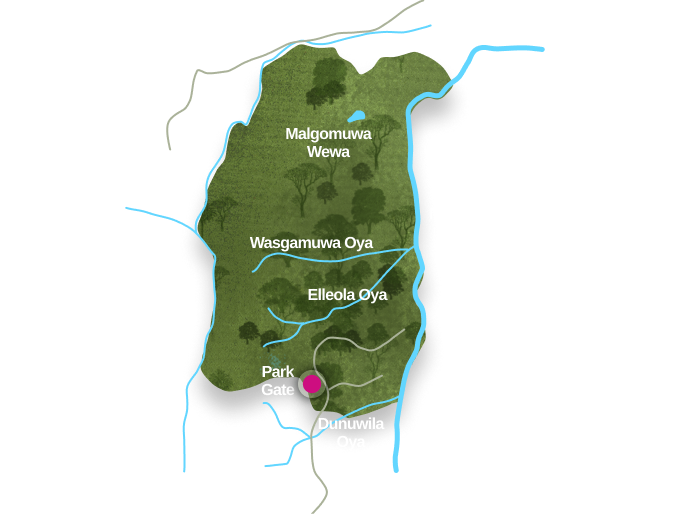A tranquil haven for wildlife, Wasgamuwa shelters herds of elephants, purple-faced langurs, mugger crocodiles, and elusive sloth bears. The park’s forested terrain and ancient ruins make it ideal for those seeking solitude in nature.






Where Wilderness Still Whispers
Wasgamuwa is one of Sri Lanka’s lesser-known treasures, a place where nature thrives undisturbed and the pulse of the wild beats strong. Once a refuge for wildlife displaced by the Mahaweli Development Project, it now spans over 36,000 hectares of pristine habitat. With its mosaic of forest types, open clearings, and riverside thickets, the park supports a wide diversity of species, both iconic and elusive.
Elephant herds are a regular presence, moving through the park’s grasslands and forests, while the Sloth Bear and Leopard linger in the shadows. The haunting call of the Brown Fish Owl may echo from the river’s edge as troops of langurs watch from above. Wasgamuwa’s remoteness offers a rare sense of intimacy—a chance to connect deeply with the wilderness, without distraction.
What to Expect in Wasgamuwa National Park
Visitors to Wasgamuwa can look forward to excellent elephant encounters, particularly during the dry season when herds gather near the Mahaweli River. Spotted Deer, Sambar, and Jackals are commonly seen, while patient observers may spot a Sloth Bear or even a Leopard. Primates such as the Hanuman Langur and the elusive Slender Loris add to the diversity of mammal sightings.
Birdwatchers are rewarded with sightings of endemics like the Ceylon Grey Hornbill and Brown-capped Babbler, as well as striking species like the Lesser Adjutant and Grey-headed Fish Eagle. The park’s peaceful nature, combined with its rich variety of habitats, makes it ideal for those seeking a more reflective, off-the-beaten-path wildlife experience.